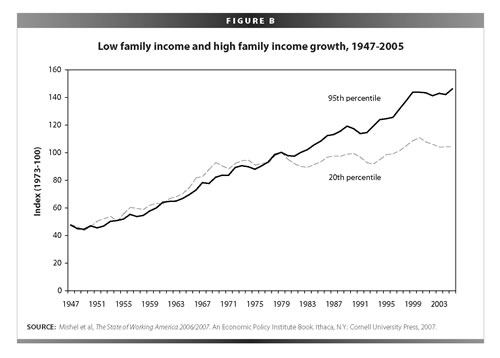Yet another prescient past prophet. This one, Joseph Stiglitz, was foretelling the economic consequences of our foreign adventures with chilling accuracy even before the Second Iraq War began. Great article from 2003, more timely than ever.---rng
It is now March 23, 2011. We have been at war since 2001. We are now fighting three wars. Count 'em---three wars. Forget all that talk about the peace dividend or war dividend, where's my job? Just a little prophecy in the making. -----lee
from The Guardian
War is widely thought to be linked to economic good times. The second world war is often said to have brought the world out of depression, and war has since enhanced its reputation as a spur to economic growth. Some even suggest that capitalism needs wars, that without them, recession would always lurk on the horizon.
Today, we know that this is nonsense. The 1990s boom showed that peace is economically far better than war. The Gulf war of 1991 demonstrated that wars can actually be bad for an economy. That conflict contributed mightily to the onset of the recession of 1991 (which was probably the key factor in denying the first President Bush re-election in 1992).
The current situation is far more akin to the Gulf war than to wars that may have contributed to economic growth. Indeed, the economic effects of a second war against Iraq would probably be far more adverse. The second world war called for total mobilisation, requiring a country's total resources, and that is what wiped out unemployment. Total war means total employment.
By contrast, the direct costs of a military attack on Saddam Hussein's regime will be minuscule in terms of total US spending. Most analysts put the total costs of the war at less than 0.1% of GDP, the highest at 0.2% of GDP. Much of that, moreover, includes the usage of munitions that already exist, implying that little or no stimulus will be provided to today's economy.
Bush's (admittedly wavering) commitment to fiscal prudence means that much, perhaps most, of the war costs will be offset by cuts elsewhere. Investments in education, health, research, and the environment will almost inevitably be crowded out. Accordingly, war will be unambiguously bad in terms of what really counts: ordinary people's standard of living.
America will thus be poorer, both now and in the future. Obviously, if this military adventure were necessary to maintain security as its advocates claim - and if it were to prove as successful as its boosters hope - then the cost might be worth it. But that is another matter. I want to debunk the idea that it is possible both to achieve the war's ends and benefit the economy.
There is also the uncertainty factor. Of course, this is no reason to invade Iraq prematurely, for the costs of any war are high, and are not to be measured primarily in economic terms. Lives will be lost - possibly far more than were lost on September 11. But the wait for war adds to uncertainties that already weigh on the US, and the global, economy: uncertainties arising from America's looming fiscal deficit and a tax cut that the country cannot afford; uncertainties arising from the unfinished "war on terrorism"; uncertainties associated with the corporate accounting and banking scandals, and the Bush administration's half-hearted efforts at reform, as a result of which no one knows what America's corporations are worth; uncertainties connected to America's massive trade deficit, which has reached all-time highs - will foreigners be willing to continue to lend to the US at a rate in excess of a billion dollars a day? Uncertainties associated with Europe's stability pact. Will it survive, and will it be good for Europe if it does? Finally, uncertainties associated with Japan: will it at long last fix its banking system, and if it does, how negative will be the short-term impact?
Some suggest that the US may be going to war to advance its oil interests. Few can doubt the influence that oil interests have on President Bush - witness the administration's energy policy, with its emphasis on expanding oil production rather than conservation. But even from the perspective of oil interests, war against Iraq is a risky venture: not only is the impact on price highly uncertain, but other oil producers, will not easily be ignored.
Indeed, should the US go to war, no one can predict the effect on oil supplies. A peaceful, democratic Iraqi regime could be established. Desperate for funds for reconstruction, that new regime could sell large amounts of oil, lowering global oil prices. Or the turmoil throughout the Muslim world could lead to disruptions of oil supplies, with high prices the result. This will please oil producers in other parts of the world, but will have adverse consequences for the global economy, akin to those resulting from the oil hikes in 1973.
Whichever way one looks at it, the economic effects of war with Iraq will not be good. Markets loathe uncertainty and volatility. War, and anticipation of war, bring both. We should be prepared for them.
Joseph Stiglitz is professor of economics and finance at Columbia University, the winner of the 2001 Nobel Prize in economics, and author of Globalization and its Discontents. He was formerly chairman of the council of economic advisers to President Clinton and chief economist at the World Bank.





